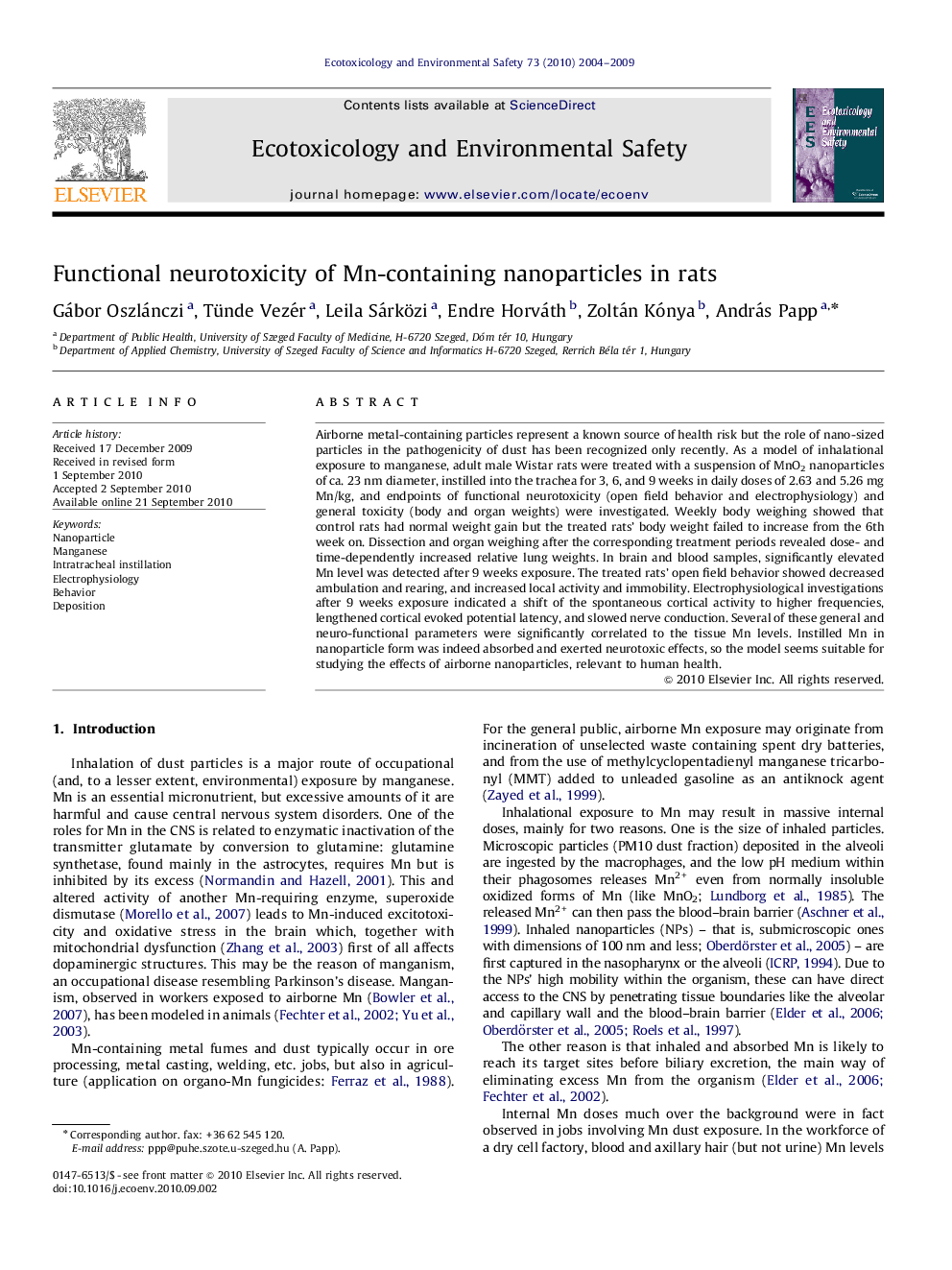| Article ID | Journal | Published Year | Pages | File Type |
|---|---|---|---|---|
| 4421584 | Ecotoxicology and Environmental Safety | 2009 | 6 Pages |
Airborne metal-containing particles represent a known source of health risk but the role of nano-sized particles in the pathogenicity of dust has been recognized only recently. As a model of inhalational exposure to manganese, adult male Wistar rats were treated with a suspension of MnO2 nanoparticles of ca. 23 nm diameter, instilled into the trachea for 3, 6, and 9 weeks in daily doses of 2.63 and 5.26 mg Mn/kg, and endpoints of functional neurotoxicity (open field behavior and electrophysiology) and general toxicity (body and organ weights) were investigated. Weekly body weighing showed that control rats had normal weight gain but the treated rats’ body weight failed to increase from the 6th week on. Dissection and organ weighing after the corresponding treatment periods revealed dose- and time-dependently increased relative lung weights. In brain and blood samples, significantly elevated Mn level was detected after 9 weeks exposure. The treated rats’ open field behavior showed decreased ambulation and rearing, and increased local activity and immobility. Electrophysiological investigations after 9 weeks exposure indicated a shift of the spontaneous cortical activity to higher frequencies, lengthened cortical evoked potential latency, and slowed nerve conduction. Several of these general and neuro-functional parameters were significantly correlated to the tissue Mn levels. Instilled Mn in nanoparticle form was indeed absorbed and exerted neurotoxic effects, so the model seems suitable for studying the effects of airborne nanoparticles, relevant to human health.
